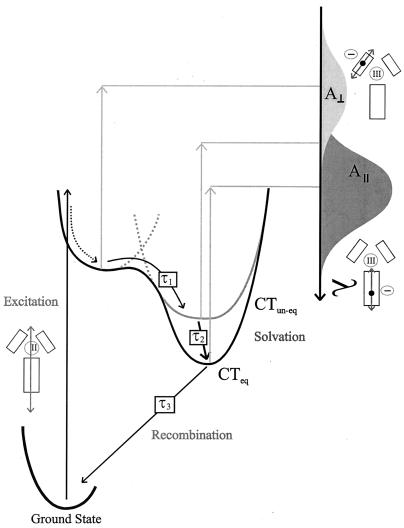Figure 6.
Schematic for the proposed relaxation pathways of 1 and 2 in water solution. The pump pulse selects overlapping MLCT singlet transitions (dominated by the indicated A polarized transition), populating MLCT states in which either the dppz or one of the phen ligands is reduced. Solvent field reorientation facilitates the phen⋅ → dppz⋅ transfer of charge such that all initially excited states end up in the dppz-localized MLCT state (CTun-eq). This transfer occurs in 700 fs (τ1). The solvent equilibration process continues (with an associated time constant, τ2, of 4 ps) involving reinforcement of hydrogen bonds and, as a consequence, a further lowering of energy (CTeq). The final modified MLCT state has a fast radiationless deactivation in water: a lifetime (τ3) of 360 ps is observed for 1, and a lifetime of 2,000 ps is observed for 2. Overlapping excited state absorption bands of orthogonal polarizations schematically illustrate how relaxation may lead to changes in anisotropy and/or isotropic absorption.

